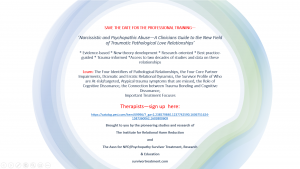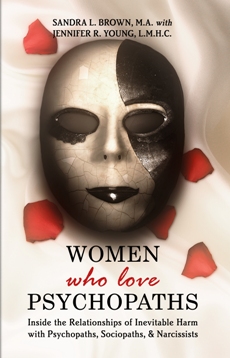Part one of this article described three phases of adrenal disruption that occur in chronic stress. We are hard-wired to respond to acute crisis with an “adrenalin rush” which describes how the adrenal glands respond to stress-they produce cortisol which gives the body a sugar boost in order to fight or flee.
If there is chronic stress and not much flight or ineffective fighting-ie, issues are not resolved, the stress response, (i.e., cortisol production) continues. Small wonder that women living with disordered men have more than their share of problems, such as thyroid imbalances, anxiety, sleep disturbances, irritability, weight gain, sex hormone imbalances, and auto-immune diseases.
If you are experiencing any of the above problems, how can you determine if in fact your adrenal functioning is out of balance?
Here are a few steps you can take:
1. These web sites have a number of helpful articles on adrenal disruption and also offer self-administered questionnaires:
http://www.diagnostechs.com/TestPanels/AdrenalStressIndex/StressTestEvaluation.aspx
2. Make an appointment with your health care provider to discuss your concerns. Print out a copy of any material or on-line test results you may have.
There are many traditionally trained healthcare providers that do not agree with these theories and dismiss research that has been conducted to explore these connections. Perhaps they are right or perhaps they are using an outdated paradigm. http://www.mayoclinic.com/health/adrenal-fatigue/AN01583
Eventually, each person has to choose his or her providers on their own. One of the goals of this column is to provide enough information to readers so that you can ask providers questions, read further for yourself or consult with practitioners who have or are adopting these new approaches.
If you wish to pursue naturopathic avenues to address these problems, consult an established practitioner in your area, one who has earned an ND degree and is licensed to practice.
He or she will
- evaluate your symptoms,
- usually have a sympathetic ear and acknowledge the sources of stress in your relationships, and
- proceed to have some tests done in order to get some objective information on which to base suggested treatment.
3.
- Make sure you eat as well as possible, exercise, no matter what it takes, a small bit each day,
- Take a good multivitamin
- GET EIGHT HOURS OF SLEEP if humanly possible.
- Bow out of any unnecessary commitments that you have taken on for at least 6 months.Do something restorative-a brief nap, a short walk, a hot bath, a chat with a friend, every single day.
- If you do not already have an excellent support system and an excellent therapist, run, do not walk in the direction of making these happen.
Again, there is some controversy in the medical community about this approach, and insurance companies in the US may not reimburse you for these services. In my personal and professional experience, I find the concepts about adrenal fatigue to be valid, and the treatments to be very effective.
Chronic stress makes demands upon body and soul. We have learned to identify the signs and symptoms of serious, ongoing stress and there are many effective and not so effective ways to deal with these problems. As readers of this column may have figured out, I am no fan of treating symptoms and ignoring underlying problems.
I strongly urge any of you who has had an ongoing relationship with a disordered individual to consider checking out the self-administered tests available on the sites referenced above. If your adrenal functioning is disrupted, it may take 6-12 months to get back into balance, so don’t hesitate to get started!
Joan-Marie Lartin, PhD, RN







